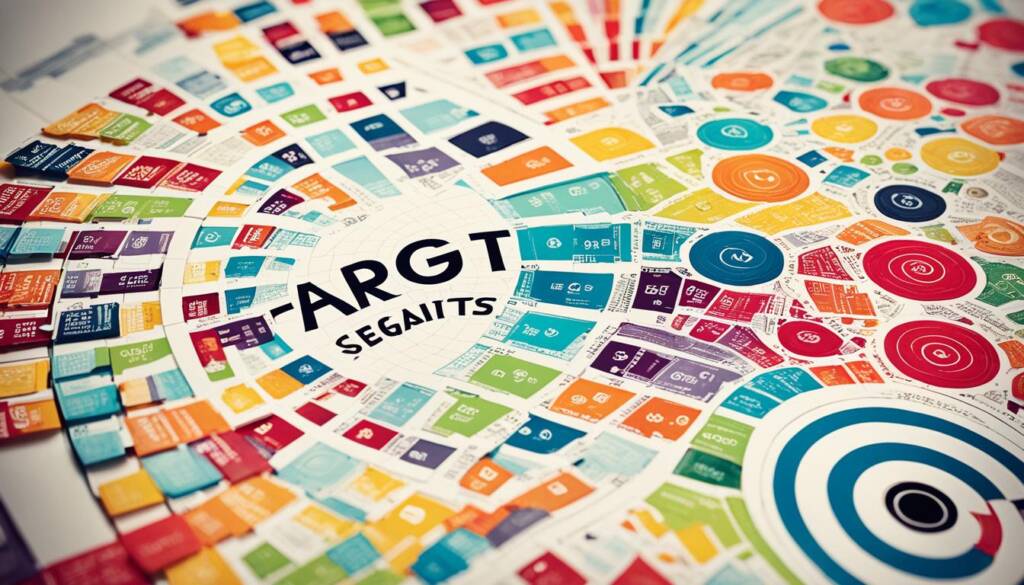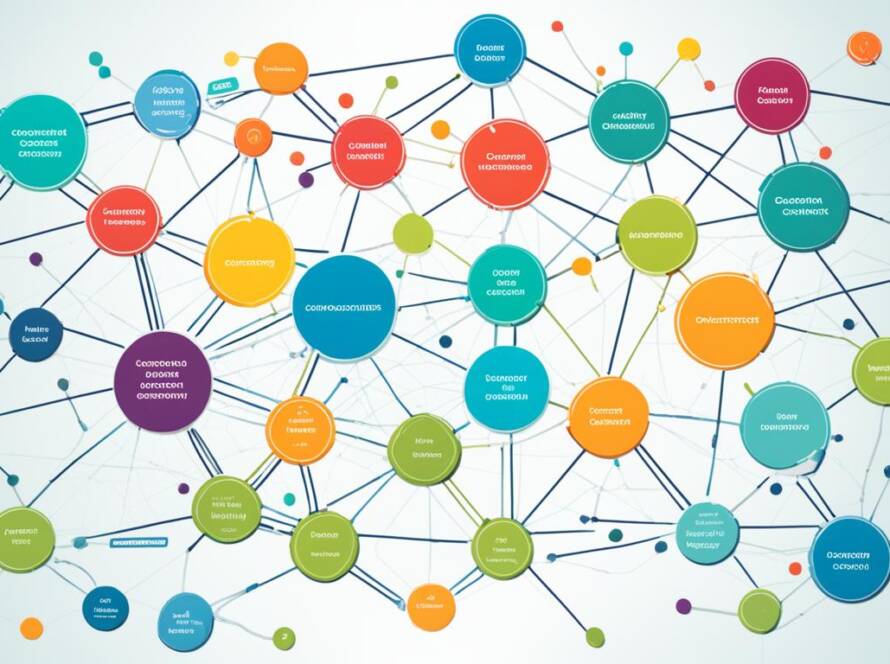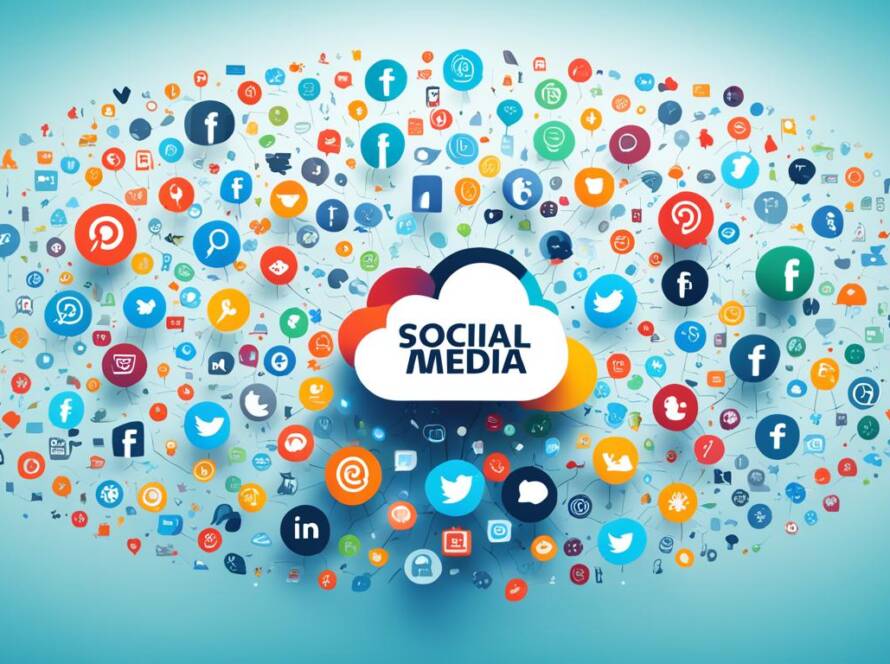The importance of target audience segmentation is key for businesses to make their marketing hit the mark. Seth Godin, a top marketing guru, warns against generic marketing that tries to reach everyone but doesn’t connect with anyone. By understanding the importance of target audience segmentation, companies can avoid being average. They make sure their messages are made just for the customer’s needs.
This makes marketing more relevant and effective. It helps businesses use their marketing budgets better by focusing on the most profitable groups1.
Also, Target Market Segmentation means ads are more relevant. This boosts the chance of people engaging with them and making a purchase. By making marketing personal for different groups, marketers can make customers happier. This leads to more sales and revenue2.
Creating customer personas is a great first step in this process. It helps marketers picture their ideal customer. This guides how they talk to their audience.

Key Takeaways
- Segmentation helps businesses tailor their marketing for specific groups, boosting conversion rates and building strong customer ties.
- Good segmentation means marketing messages are made just for certain customers, meeting their specific needs.
- Using segmentation lets businesses use their marketing money better by focusing on the most profitable groups1.
- Segmenting the market is key to boosting sales and revenue by making marketing more relevant and personal2.
- Starting with customer personas is a great way to shape marketing strategies effectively.
Understanding the Basics of Target Audience Segmentation
Segmenting a target audience is key to a strong Customer Segmentation Strategy. By knowing the different types of segmentation, businesses can make their marketing hit the mark with certain groups. This makes their messages more engaging.
Defining Target Audience Segmentation
Target Audience Segmentation means breaking a big audience into smaller groups that share similar traits. These traits can be things like demographics, how they behave, or what they think. This makes it easier for marketers to send out messages that really speak to people. By doing this, marketers can avoid sending out messages that don’t connect with customers3.
Using tools that automate and use data can help businesses get more leads by 80%4. Tailoring messages to specific groups can also boost conversion rates and make customers more loyal3.
Types of Audience Segmentation
There are a few ways to segment an audience, each offering different insights for targeted marketing:
- Demographic Segmentation: This method sorts people by things like age, gender, income, and more4. It helps marketers make offers that fit different groups.
- Behavioural Segmentation: Looking at how customers act, like how often they buy things, helps shape sales and marketing4. This way, brands can send messages that really speak to customers3.
- Psychographic Segmentation: This focuses on what buyers value and want, to make marketing that matches their interests4. It requires a deep dive into what makes the audience tick.
Businesses often mix different segmentation methods for better marketing campaigns. Testing these strategies is key to seeing what works best and improving marketing returns3. Tailoring messages to each group makes campaigns more effective5. Through careful analysis, companies can find new ways to grow and connect with customers in new ways, like through multiple devices or seasonal trends.
The Role of Customer Segmentation Strategy in Marketing Success
A strong Customer Segmentation Strategy is key to doing well in marketing. It makes sure messages hit the mark, making them more relevant. Knowing your audience well means you can shape your messages to meet their needs and likes. This makes people more likely to engage with your brand.
Personalisation in Marketing does more than just send out messages. It shapes what products you offer, how you promote them, and how you talk to customers. This targeted approach boosts conversion rates, turning more people into customers. It builds trust and keeps customers coming back, helping your business grow.
Personalisation and Relevance
Personalisation in Marketing is vital for making content that speaks to each customer. By sorting your audience by who they are and what they do, you can send messages that really speak to them. For example, looking at what people buy and how they use the internet tells you what they like to see and hear from you67.
Most customers want a personal touch in their shopping experiences, which can lead to more spending8. This makes your marketing more effective by building a stronger bond with your customers.
Improving Conversion Rates
Getting better at turning visitors into customers relies on knowing your customers well. By looking at data and focusing on certain groups, you can make your marketing hit the spot8. For example, seeing who buys what and how they act online gives you clues about what they want and why they buy7.
This lets you craft messages that really speak to your audience, making them more likely to buy. This way, you can boost your conversion rates a lot.
Building Customer Loyalty
Keeping customers coming back is all about knowing what they want and need. By sorting customers by what they do and like, you can build stronger bonds68. For example, making content just for them can make them more loyal and spread the word about your brand7.
Segmenting customers also leads to more small buys, which can add up to a lot over time8. Creating profiles of your customers helps you tailor your approach to their unique tastes and needs. This keeps them coming back and engaged with your brand for the long haul.
Benefits of Targeting Audience through Effective Segmentation
Targeting the right audience through smart segmentation brings big wins for businesses. It helps improve how well companies connect with customers, leading to better performance and happiness.
Optimising Marketing Budget
One key perk of targeting the right audience is saving money on marketing. Companies that segment well saw a 10% profit boost over five years compared to those who didn’t9. This means they use their money on campaigns that really work, cutting down on waste and making more from their budget. Plus, they get better results and spend less to get new customers9.
Enhanced Customer Engagement
Segmenting the audience also boosts how engaged customers are. Brands like American Express, Mercedes Benz, and Best Buy have seen sales and engagement go up9. By sending out content that matters to their audience, companies can really connect. This leads to more sales and strengthens the bond with customers. Segmenting the market also keeps customers loyal and happy, which is key for growing over time10.
This approach also uncovers hidden markets and what new customers want, leading to marketing that’s more focused and clear910. So, companies can talk to the right people at the right time, building stronger relationships and more repeat business. Using tools like the Web AI Engine makes these efforts even more effective, creating unique experiences for users.
Conclusion
Understanding and using Target Audience Segmentation is key for businesses to connect better with their customers. By looking at demographics, psychographics, geography, and behaviour, companies can learn what customers want and like11. This helps send messages that hit the mark and boosts sales as marketing gets more focused12.
Good segmentation makes marketing match what customers expect and uses resources wisely. Companies can spend their marketing budget better by targeting areas that give the best return. This leads to a more efficient marketing plan and a competitive edge12. Also, making customers feel special leads to loyalty and more repeat business1112.
Success in audience segmentation is vital for making marketing strategies that meet market needs and customer wants. Whether it’s about B2B or B2C, careful segmentation gives insights that help make marketing campaigns successful and grow the business. As we keep improving these strategies, brands will stand out in a crowded market.
Source Links
- https://optimine.com/the-importance-of-audience-segmentation/
- https://useinsider.com/what-is-marketing-segmentation/
- https://mailchimp.com/marketing-glossary/audience-segmentation/
- https://www.mxtrautomation.com/the-complete-guide-to-audience-segmentation-and-targeting/
- https://www.linkedin.com/pulse/identifying-segmenting-your-target-audience-scott-parker
- https://abmatic.ai/blog/role-of-customer-segmentation-in-creating-targeted-marketing-campaigns
- https://abmatic.ai/blog/role-of-customer-segmentation-in-content-marketing
- https://www.qualtrics.com/experience-management/brand/customer-segmentation/
- https://www.qualtrics.com/uk/experience-management/brand/market-segmentation/
- https://bython.com/benefits-of-market-segmentation/
- https://coresignal.com/blog/market-segmentation/
- https://integrity-connect.co.uk/segmentation-targeting-the-right-audience-for-better-results/


